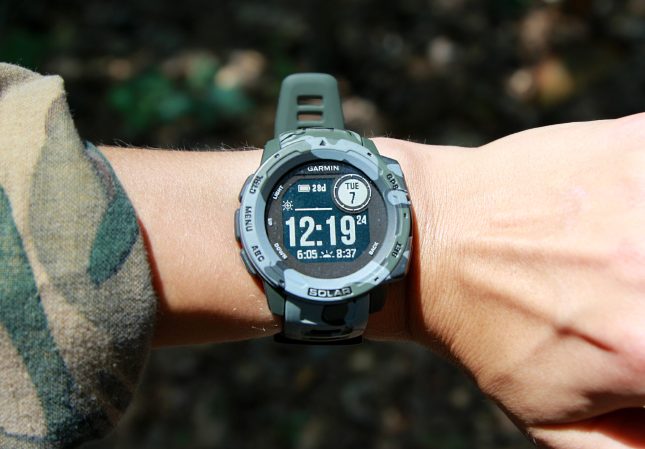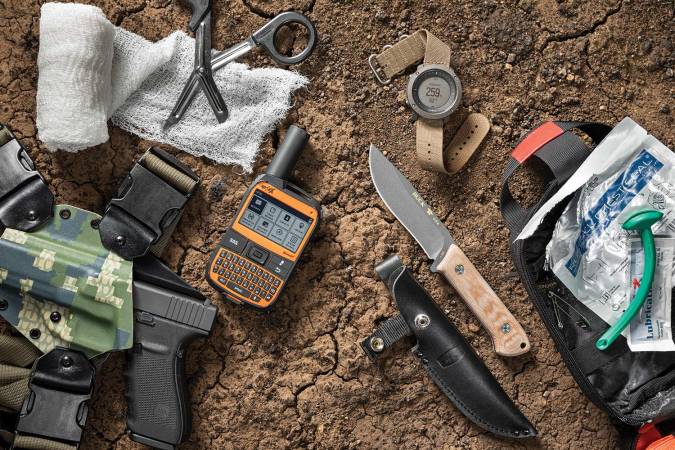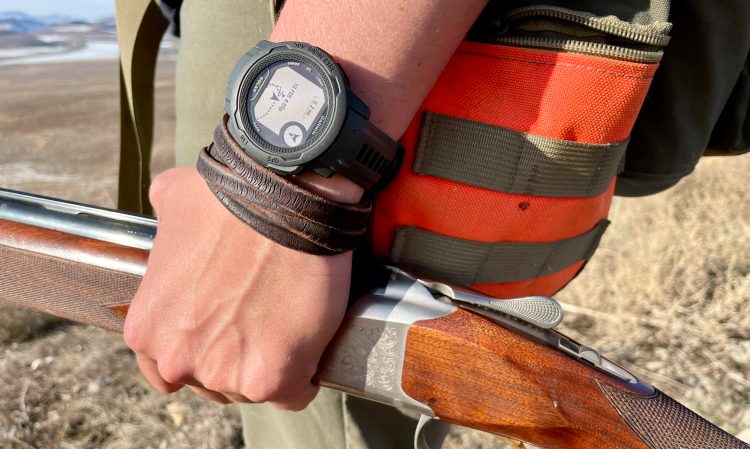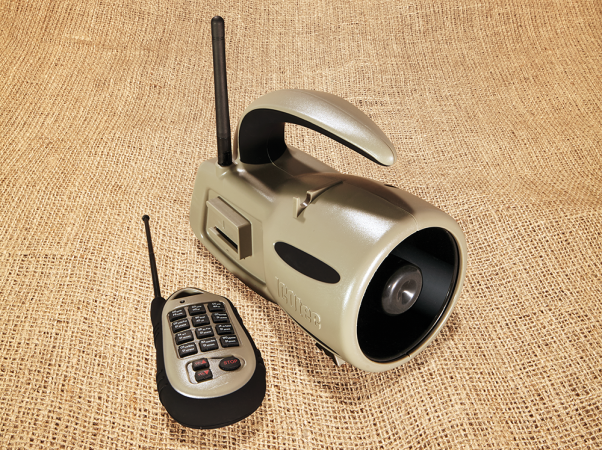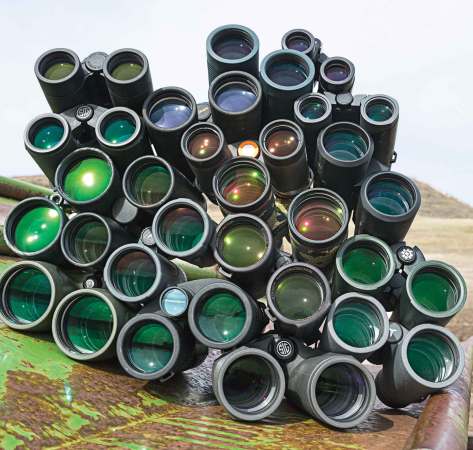We may earn revenue from the products available on this page and participate in affiliate programs. Learn More ›
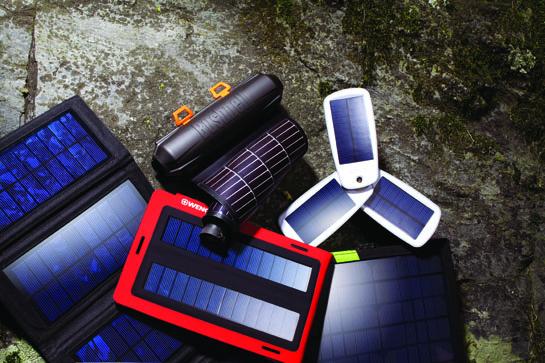
Times sure have changed. A generation ago, when sportsmen headed into the bush they carried a map and a compass for navigation, and in case of an emergency, they had matches and maybe a flare. Nowadays, many sportsmen won’t leave the truck without a GPS, smartphone, and video camera.
These technological tools have their benefits and applications, but only as long as they have power. Losing juice on your phone during a great game of Angry Birds is annoying, but relying solely on a GPS with limited battery life to get you back to camp is a dangerous proposition. Enter the portable solar panel.
As solar technology has continued to improve, both products and prices have been shrinking. Manufacturers today are producing affordable, portable solar-power units so small and lightweight, you might even forget you’re carrying them. We gathered seven different units—each costing less than $200—to determine which is the best choice for the modern woodsman.
Rating Key: ★ ★ ★ ★ – Excellent; ★ ★ ★ – Very Good; ★ ★ – Good; ★ – Fair
1. JOOS Orange
The JOOS Orange is built like a luxury tank, its polycarbonate case protecting the internal components. Two valuable features are the collapsible legs, which allow for easy angling toward the sun, and a security hole, which lets you lock the unit to something stationary. The Orange is compact (8.6 by 5.8 inches) but a little heavy (24 ounces). It was the fastest charger in the test, taking a nearly dead iPhone 4S to a full charge in an hour. The internal battery pack stores energy for later use, but the unit also charges devices directly. The only thing it lacks is a carry case or bag.
Overall: ★ ★ ★ ★
Portability: A
Durability: A+
Chargeability: A+
Ease of Use: A+
Versatility: A-
Price/Value: A
Price: $149 / solarjoos.com
Final Word: Rugged construction and simple operation make this unit a top choice for remote power.
2. Brunton Explorer2
The Explorer2 is a true go-anywhere solar charger. It weighs under a pound (14.8 ounces) and folds down to a compact 4.5 by 9.5 inches, but unfolds to 27.25 by 9.5 inches. If you’re going for a day hike with only a small pack, the unit will fit nicely. It charges directly but only has a USB output—fine for most handheld devices, but for larger items you’ll need a separate power system. The four solar panels increased the charge of the 4S by about 35 percent in one hour. Corner grommets allow the unit to be strapped down or hung up. At under $100, the Explorer2 is a great value.
Overall: ★ ★ ★ ★
Portability: A+
Durability: B
Chargeability: A-
Ease of Use: A+
Versatility: A-
Price/Value: A
Price: $96 / bruntonoutdoor.com
Final Word: Nothing flashy here, but you can get a ton of functionality from under $100.
3. Bushnell SolarWrap 250
The scroll-like SolarWrap 250 earns points for creativity. The paper-thin solar panel rolls up into a protective case that measures 9.5 by 2.5 inches (unfurled, it measures 9.5 by 15). The USB outlets are on the ends (under caps), so you can charge from the battery while on the move without risking damage to the panel. The SolarWrap doesn’t charge directly, but it packs a punch once the internal lithium ion battery is charged. That took all day, but then it brought the phone from 50 percent to full in one hour. The lightest unit in the test (9.5 ounces), the SolarWrap is a good choice for the backcountry.
Overall: ★ ★ ★ ½
Portability: A+
Durability: B
Chargeability: B
Ease of Use: A-
Versatility: B
Price/Value: A
Price: $70 / bushnell.com
Final Word: Easily the most innovative solar panel on the market. Lightweight and highly portable.
4. Gomadic SunVolt
Size matters. The SunVolt is large, which is both good and bad. At 13 by 12 inches, the panel is powerful but heavy (4.3 pounds). Given its size, you’d expect the SunVolt to charge rapidly, and it does. It took a half-charged iPhone 4S to a full charge in an hour. It’s so powerful that you can charge two devices at once. The bad news is that it’s too large to be considered for backpacking excursions. It comes in a carry case, which makes it easy to transport, and it conveniently folds so you can angle it toward the sun. There is no internal battery for nighttime charging, but you can buy one separately ($40).
Overall: ★ ★ ★ ½
Portability: B+
Durability: A-
Chargeability: A-
Ease of Use: A-
Versatility: C-
Price/Value: B+
Price: $100 / gomadic.com
Final Word: Big and beefy, this unit will serve you best in car-camping scenarios.

The Wenger Solar Charger Standard isn’t only lightweight—only 17 ounces—it’s also extremely versatile. The unit comes with a set of straps, so if you’re hiking, you can lash it to your pack and charge while on the move. At 10 by 6.7 inches, the charger will fit just about anywhere. Unfortunately, the Wenger only charges from the (included) external battery pack. If you are in a hurry for power, you first have to charge the battery, and then use it to charge your device. But the reserve power does allow you to charge after dark.
Overall: ★ ★ ★ ½
Portability: A+
Durability: B-
Chargeability: B
Ease of Use: B-
Versatility: A
Price/Value: B-
Price: $180 / wengerna.com
Final Word: Pricey, but a lot of cool features make this a solid investment.
6. Solio Classic2
The Classic2 is more a portable battery pack capable of being recharged by the sun than it is a solar panel. It features a rotating three-panel fan design, and was one of the smallest and lightest units we tested (5.8 by 2.8 inches closed, 10.1 ounces). It doesn’t charge quickly—the internal battery took a full day in the best conditions to fully charge—but once the battery has juice, it transfers quickly to a device. In one hour, the charged unit took our 4S from near dead to full. The Classic2 comes with a pencil to use as a stand, but a slender stick will work just fine, too. It only powers USB devices.
Overall: ★ ★ ★ ½
Portability: A+
Durability: C
Chargeability: B-
Ease of Use: A-
Versatility: B
Price/Value: B
Price: $100 / solio.com
Final Word: Funky design, but this one takes a while to get fully charged
7. Goal Zero Nomad 13
The Nomad 13 is sort of an in-between solar charger. At 26 ounces, and with folded dimensions of 10.5 by 7 inches, the unit is oversize for a backpack—it’d be a better choice for a base camp. It unfolds to 18.25 by 10.5 inches, and comes equipped with three attached connection cables. This ensures you won’t lose them, but also forces you to carry them even when they’re not needed. The unit will charge devices directly, but after leaving the phone plugged in for one hour, we saw only a slight increase in battery charge. It should be noted that Goal Zero recommends using one of its own battery packs, like the Guide 10 ($40), “for best results.”
Overall: ★ ★ ★ ½
Portability: B
Durability: B
Chargeability: C
Ease of Use: A
Versatility: A-
Price/Value: C
Price: $159 / goalzero.com
Final Word: An okay unit if you add on the company’s battery pack. Otherwise, its charging power is anemic.
Buyer’s Guide
Portable solar panels are a relatively new technology to outdoorsmen. It’s not like you can ask your old man which model he used to carry. As you shop, keep these things in mind.
– Portability: How far from the car are you going to take your charger? What do you intend to charge with it?
– Construction: Are a few extra ounces worth a more solid build?
– Charging power: What devices is the unit capable of charging and how fast does it charge them? Does it charge directly, or does it charge from a reserve battery?
– Ease of use: Does it have multiple outputs? Does it indicate the charge level?
– Versatility: Does it store power for night charging? Can you charge more than one device at a time? Can you charge while you are on the move?

If we wanted to pad stats, then March in the Midwest wasn’t the optimal time or place to test solar panels. We chose to test under these conditions because we wanted to know how these units would fare for the average hunter. Over the course of three days, we tested seven different solar panels under partly sunny skies with temperatures ranging from the high 40s to the mid 50s. Scattered clouds were persistent and rain drizzled down more than once. Each unit was set up to face the sun for one hour. We hooked up an iPhone 4S to the unit, set an alarm, and went fishing. An hour later we checked the battery status.
We didn’t beat the units with a hammer, drop them off a cliff, or drown them in a bucket of water because they are electronic devices and we wouldn’t abuse them like that in the real world. We did thoroughly examine and judge them for portability, construction, how well they charge, ease of use, versatility, and value.







